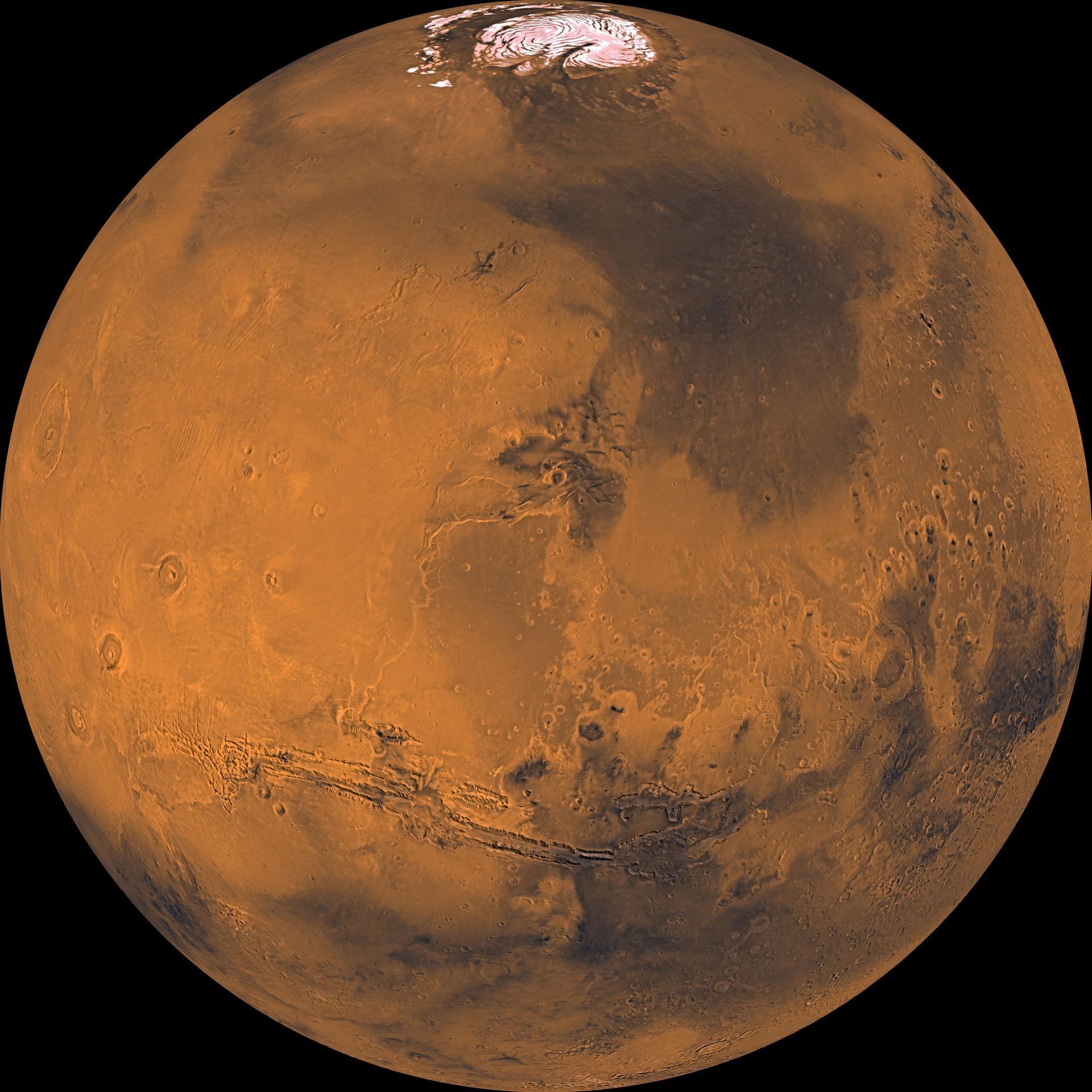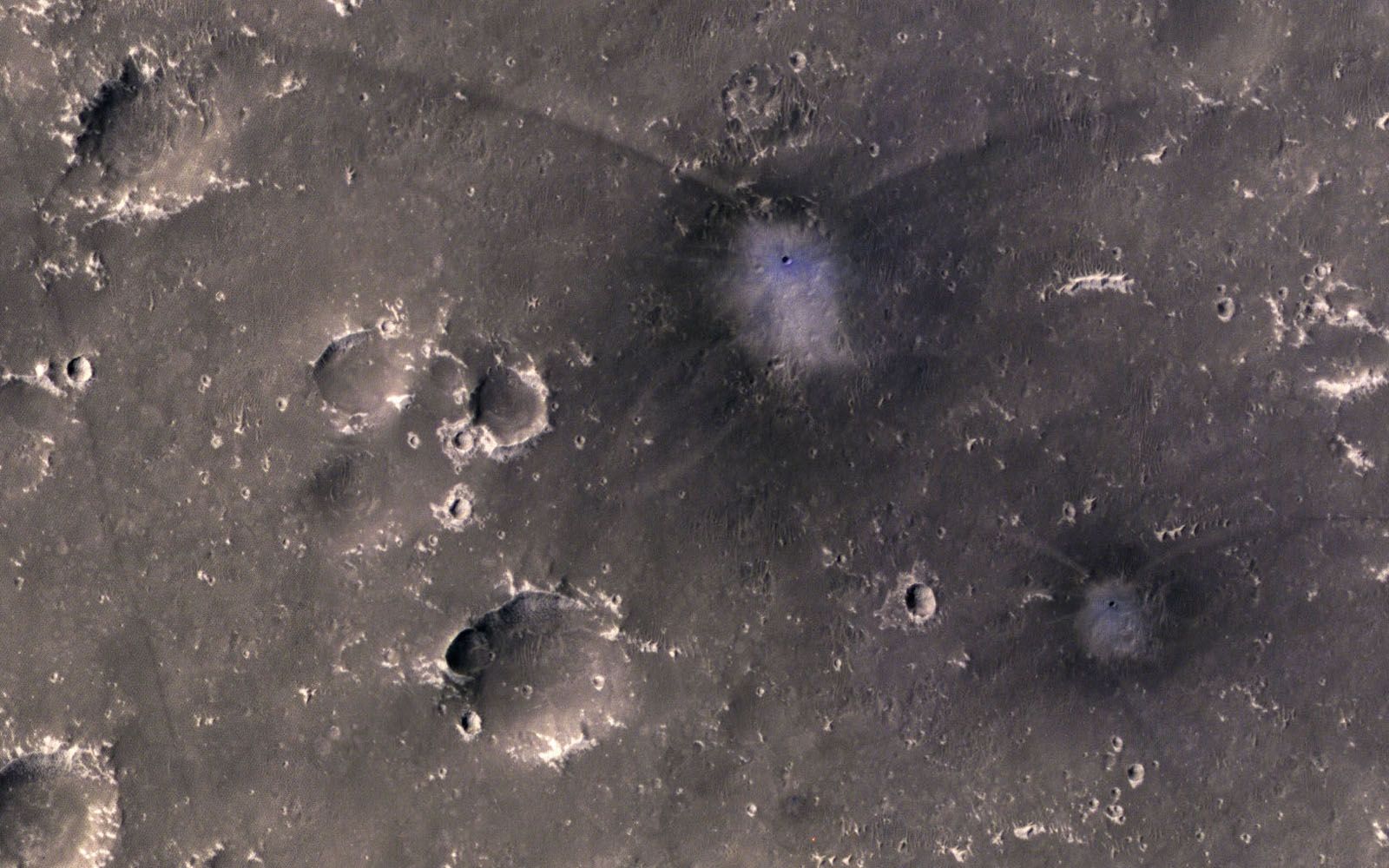On February 25th, 1969, NASA launched Mariner 6, a spacecraft intended to conduct a flyby of Mars to search for signs of life on the red planet. When it passed by Mars, it took many pictures. It might not sound like much, but those photos revealed many Martian mysteries. Here’s what we learned.
The Surface Pressure of Mars is Much Lower Than on Earth
On Earth, you don’t often think of the pressure constantly pressing down on your body. You’re accustomed to it, so you never feel it. But there are various levels of pressure on Earth. You’ll feel a lot more pressure diving deep into the ocean, and you’ll feel less if you ascend high into the atmosphere. Changes in pressure like this are why your ears sometimes pop when traveling between different elevations.
Mars has surface pressure just like Earth does, but it’s much less significant than ours. The pressure on the surface of Mars is about the same as the pressure 19 miles above Earth’s own surface. This is mostly caused by the thin atmosphere of Mars—it’s only about 1% as dense as the Earth’s atmosphere is at sea level.
The Atmosphere of Mars is Mostly Carbon Dioxide
Here on Earth, the majority of our atmosphere is comprised of nitrogen, which makes up about 78%. Carbon dioxide is less than a percent at around 0.04%. Mars is much different from us in this regard, with an atmosphere that consists of approximately 98% carbon dioxide. Considering how much damage excess carbon dioxide is doing to our biosphere, and how hot Venus is due to a runaway greenhouse effect, you’d be forgiven for thinking that Mars is incredibly hot.
Despite all the carbon dioxide in Mars’ atmosphere, that atmosphere is much thinner than that of Earth’s, so it doesn’t retain a lot of the heat accumulated during its daylight hours. In fact, the atmosphere on Mars is so thin that the temperature rarely gets above 70 degrees Fahrenheit. The temperature on Mars is a remarkably odd thing, with the temperature near your feet potentially being dozens of degrees warmer than the temperature near your head if you were standing on the surface.
The carbon dioxide on Mars can also freeze when temperatures get cold enough, trapping warmer gas underneath a sheet of carbon dioxide ice. If gaps form in the ice, the trapped gas can escape and create forceful geysers. Even though the Mariner 6 didn’t land on Mars, it had the right instruments equipped to determine many things about its surface. The spacecraft was able to pick up infrared readings from the southern polar ice cap on Mars that were consistent with solid carbon dioxide.
The Surface of Mars is Full of Chaotic Craters
Though we’d been able to view Mars through telescopes for centuries before launching Mariner 6, we didn’t yet have a great understanding of its surface at that time. With the flyby photos that Mariner 6 took of the Red Planet, we discovered that its surface, or at least some parts of it, was not much different from Earth’s Moon. There are areas of Mars absolutely covered in craters of all sizes.
The thin atmosphere of Mars does have something to do with this, as meteorites don’t burn up as much when crashing through the thin air on Mars. That means more material actually makes it down to the surface to impact it. But this isn’t the only reason why there are so many craters on Mars.
Once a crater is formed from a meteor impact, there isn’t a whole lot happening on Mars to actually wipe it away over time. There’s not much soil erosion happening since there is no rain and only sporadic seasonal water flows, no big tectonic movements to change the surface of the planet, and no new lava flows going around to cover any of it up with new material. A combination of all of these factors creates the chaotically cratered surface of Mars.
This is about all we learned about Mars from the Mariner 6 mission. It might not seem like a whole lot when reading it when compared to modern missions, but remember, this mission was in 1969, and it provided us with a whole new perspective on the Red Planet. Besides that, Mariner 6 tested out new technologies and provided valuable data about the performance of deep-space craft, informing future NASA missions. Mariner 6 advanced our understanding of a field where there’s always more to learn.






